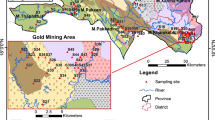Abstract
The detection of 37Ar is important for On-Site Inspections (OSI) for the Comprehensive Nuclear-Test-Ban Treaty monitoring. In an underground nuclear explosion this radionuclide is produced by 40Ca(n,α)37Ar reaction in surrounding soil and rock. With a half-life of 35 days, 37Ar provides a signal useful for confirming the location of an underground nuclear event. An ultra-low-background proportional counter developed by Pacific Northwest National Laboratory is used to detect 37Ar, which decays via electron capture. The irradiation of Ar gas at natural enrichment in the 3L facility within the Mark II TRIGA reactor facility at The University of Texas at Austin provides a source of 37Ar for the calibration of the detector. The 41Ar activity is measured by the gamma activity using an HPGe detector after the sample is removed from the core. Using the 41Ar/37Ar production ratio and the 41Ar activity, the amount of 37Ar created is calculated. The 41Ar decays quickly (half-life of 109.34 min) leaving a radioactive sample of high purity 37Ar and only trace levels of 39Ar.




Similar content being viewed by others
References
Bowyer TW, Schlosser C, Abel KH, Auer M, Hayes JC, Heimbinger TR, McIntyre JJ, Panisko ME, Reeder PL, Satorius H, Schulze J, Weiss W (2002) J Environ Radioact 59:139–151
Biegalski SR, Saller T, Helfand J, Biegalski KMF (2010) J Radioanal Nucl Chem 284:663–668
Comprehensive Nuclear-Test-Ban Treaty, United Nations General Assembly Resolution Number 50/245 (1996) UN, New York, USA
Aalseth CE, Day AR, Haas DA, Hoppe EW, Hyronimus BJ, Keillor ME, Mace EK, Orrell JL, Seifert A, Woods VT (2010) Nucl Inst Meth A. doi:10.1016/j.nima.2010.09.135
Trellue HR (1998) Los Alamos National Laboratory document LA-T-13514
Stacey WM (2001) Nuclear reactor physics. Wiley, New York
Haas DA, Biegalski SR, Foltz Biegalski KM (2009) J Radioanal Nucl Chem 282:677–680
Nakagawa T (1994) JENDL-3.2, JAERI. http://atom.kaeri.re.kr
Acknowledgments
This research was performed under appointment to the U.S. Department of Energy Nuclear Nonproliferation International Safeguards Graduate Fellowship Program sponsored by the National Nuclear Security Administration’s Office of Nonproliferation and International Security.
Author information
Authors and Affiliations
Corresponding author
Rights and permissions
About this article
Cite this article
Egnatuk, C.M., Lowrey, J., Biegalski, S.R. et al. Production of 37Ar in The University of Texas TRIGA reactor facility. J Radioanal Nucl Chem 291, 257–260 (2012). https://doi.org/10.1007/s10967-011-1254-0
Received:
Published:
Issue Date:
DOI: https://doi.org/10.1007/s10967-011-1254-0




